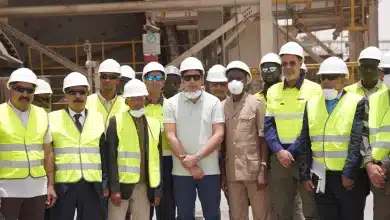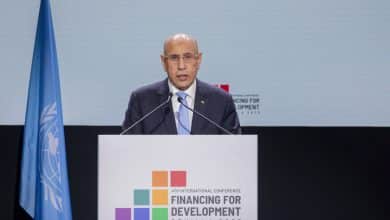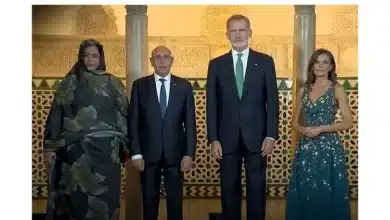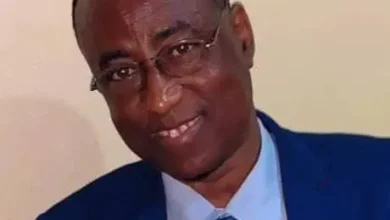Mauritania – Arabisation or negrification?
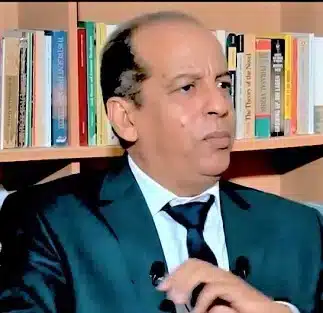
Mauritania
Arabisation or negrification?
By Ely Ould Sneiba
The Arab Mauritanians have never asked their Fula-Tekrur, Soninke, and Wolof compatriots to be Arabs and have never brought in Arabs to swell their demographic.
It is, therefore, curious to speak of forced Arabisation when we know that, from the independence of Mauritania to the present day, no Arab from the Maghreb or the Gulf or the Middle East has been a minister, senior civil servant, chief of staff of the army or the gendarmerie or the guard. The armed forces and security forces have never enrolled a single officer or non- commissioned officer or troop from Arab countries, and the same is true of the civil service.
Nevertheless, we have already seen Mauritanians of West African origin, particularly Tekrurs of Senegalese origin, occupy these positions and even run for the supreme magistracy. For example, President Moktar’s first aide-de-camp was Commander Diallo, a Malian, and the first Mauritanian ambassador to Paris was Mamadou Touré, who later became a minister in the government of Abdou Diouf in Senegal. Furthermore, the first Mauritanian ambassador to Senegal was a Fula-Tekrur, which was not to the liking of President Senghor, according to a confession by President Moktar.
Better still, out of the 105 political parties on the Mauritanian political scene, none is led by a Moroccan, an Algerian, an Egyptian, an Iraqi, or a naturalised Mauritanian who proposes to resurrect Bilad Chinguitt.
By the way, all West Africans could obtain Mauritanian nationality by making a simple application stamped with 50 ouguiyas, less than a tip.
The demographic ratio was not a concern for the Arab Mauritanian elites and leaders. Their community formed a majority and is still the biggest ethnic group, even if FLAM’s false propaganda claims argue the opposite.
Already, the ‘Manifesto of the 19’ distributed during the interracial riots of 1966 stated that we (the Black community) ‘deny the existence of an Arab Mauritanian majority’71. In addition to the political argument of nativeness (‘we were here before the Arabs’), the FLAM fighters add another lie: ‘We are the majority and always have been’.
The Black activists know their assertion is false, but it does not matter. The propagandist realises that ‘if he repeats a statement often enough, it will in time come to be accepted by his audience’. It is an old recipe attributed to Joseph Goebbels, the Hitlerian minister for Nazi propaganda, which states: ‘The bigger the lie, the more it gets through. Maybe, but not this one.
A simple demonstration is enough to re- establish the truth: according to the draft constitution proposed in 1961 by the representatives of the Fûta population:
– The southern province includes:
Rosso, Boghé, Gorgol, M’bout, Kankossa, and Guidimakha.
– The northern province comprises:
Baie du Lévrier, Adrar, Tiris-Zemmour, Inchiri, Nouakchott, Boutilimitt, Mederdra, Aleg, Tagant, Kiffa and the Western and Eastern Hodhs.
The spatial distribution described above gives an idea of the demographic weight of each community, with one crucial detail: all the southern provinces are territories where the Fula- Tekrur, Soninke, and Wolof ethnic groups live together, on the one hand, and the Emirates of Trarza, Brakna, and Idaouichs, on the other, so the Black Mauritanians did not have exclusive rights to the river region; whereas the northern province is exclusively Arab Mauritanian.
The number of registered voters for the 2019 presidential election provides a telling indication of the Arab Mauritanian to Black Mauritanian racial ratio:
Wilaya:
Hodh Echarghi: 152,444 registered Hodh El Gharbi: 120,475 registered Asaba: 128,483 registered.
Gorgol: 109,304 registered
Brakna: 153,885 registered.
Trarza: 167,512 registered
Adrar: 45,285 registered.
Nouadhibou: 67,177 registered.
Tag: 45,285 registered.
Guidimakha: 74,726 registered.
Tirs-Zemmour: 26,314 registered.
Inchiri: 17,219 registered.
Nouakchott West: 97,409 registered
Nouakchott South: 113,767 registered
Nouakchott North: 109,142 registered
Total: 1,428,867 registered.
NB: The Black Mauritanian nationalists were in the race with two candidates: Kane Hamidou Baba, candidate of the Coalition Vivre-ensemble, and Biram Dah Abeid, a Haratin widely supported by voters in the Senegal River Valley.
The Tekrurs are a minority, whether accepted or not, and if we add the Fula to them, they remain a minority. Moreover, if all the Black Mauritanians united, their demographic weight would remain lower than that of the Arab Mauritanians. Worse, their hope will not come from the Harratins because the latter are not Black Mauritanians; they are Arabs, just as the Mamluks, the conquerors of the Tatars, were Arabs. Even so, the FLAM movement tends to confuse. They consider any Black person living in Mauritania a Black Mauritanian, whatever his language, culture, and origin. They speak of Black epidermal reality, and that is all.
Regarding the question of community percentages, it would be fair to agree with Bah Ould Zein and Ambroise Queffélec’s realistic assessment:
‘’The Hassân-speaking group constitutes a culturally and linguistically homogeneous group made up of two subsets: The White Arab Mauritanians or Beïdan (singular: Bidhani) of Arab-Berber origin representing about 40% of the population, who are sometimes mixed race. And the Black Arab Mauritanians, or Harratin (singular: Hartani), whose ancestors were raided in African countries and enslaved, were assimilated by their former White masters before being freed; the Harratins also represent about 40% of the population. The Black Mauritanian group, which makes up approximately 20% of the population, comprises four main sub-groups, corresponding to ethnic groups, the majority of which live in Senegal and Mali, the border countries: the Haalpulars (speakers of the Fulani language) include the Fula and Tekrurs living from Gorgol to Brakna; the Soninke live in Gorgol and Guidimaka; the Wolofs live mainly in the Rosso region; the Bambara, a tiny minority, live in the Nema region. The two other main components, the Black Mauritanians and the Arab Mauritanians, live respectively in the south, and the centre and the east of the country’’.
Moreover, the census carried out in 1932 by the colonial administration, which did not include the sizeable eastern part of the country, which was almost exclusively Arab Mauritanian and still part of French Sudan, confirms their assessment. See the table below.
On the side of the FLAM, there are no figures to deny or confirm the facts, just sociological analysis; they argue that the Black Mauritanians are in the majority for the following reasons:
1. A much higher fertility rate among Black Mauritanians (Harratin, Soninke, Fula-Tekrur, Wolof, Bambara);
2. Polygamy, which is practised almost exclusively in the Black environment;
3. A relatively high divorce rate generally characterises the Beïdan households75.
That said, since the arguments are not on a scientific plane, the dispute over proportions is a never-ending story, and perhaps that is the point for Black ethnicists.
Mauritania: the ethnic issue explained by Ely Ould Sneiba

